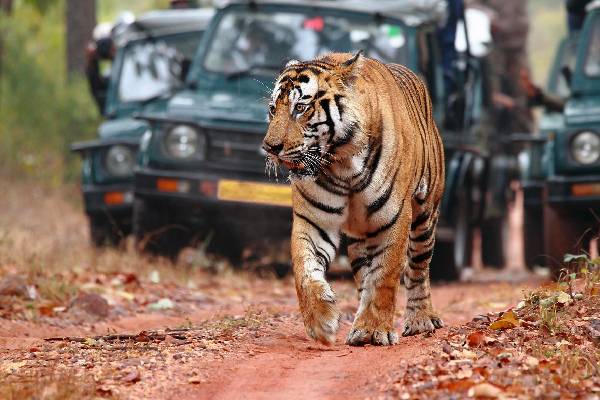India, with its rich biodiversity and numerous national parks, offers an exceptional opportunity for wildlife photographers. Among these, Bandhavgarh National Park, located in the Umaria district of Madhya Pradesh, stands out as one of the best places in the world to capture the majestic Bengal tiger in its natural habitat. A Bandhavgarh Tiger Photography Tour is not just a trip; it’s a thrilling journey through dense forests, ancient ruins, and teeming wildlife, perfect for both amateur and professional photographers.
Why Choose Bandhavgarh for Tiger Photography?
High Density of Tigers
Bandhavgarh has one of the highest tiger densities in India. The chances of spotting and photographing tigers here are significantly higher compared to other parks.
Diverse Terrain and Scenic Beauty
From lush sal forests and bamboo groves to open grasslands and rocky hills, Bandhavgarh offers varied backdrops, ideal for stunning wildlife photography.
Rich Wildlife Beyond Tigers
Besides the tiger, Bandhavgarh is home to leopards, sloth bears, wild boars, jackals, over 250 species of birds, and many more, offering plenty of photography subjects.
What to Expect on the Photography Tour
1. Guided Safari Drives
Two safaris daily (morning and afternoon)
Expert naturalists and guides accompany you
Private gypsy vehicles for better photographic positioning
2. Photography Workshops
Tips on camera settings, composition, and lighting
Post-processing sessions in the evening
Personalized guidance from professional wildlife photographer
3. Comfortable Eco-Stays
Lodges and resorts near the park
Early breakfast and packed lunches during safaris
Evening bonfires and group image review sessions
What to Carry for the Tour
- DSLR or mirrorless camera with telephoto lens (200–600mm recommended)
- Wide-angle lens for landscapes
- Tripod or monopod for stability
- Extra batteries and memory cards
- Camouflage clothing and a hat for sun protection
- Binoculars for spotting distant wildlife
Best Zones for Tiger Sightings
Tala Zone: Most popular, known for historic Bandhavgarh Fort and regular tiger sightings.
Magadhi Zone: Offers wide grasslands and is great for tiger tracking.
Khitauli Zone: Less crowded and rich in birdlife and other predators.
Best Time to Visit
October to June is the best time for tiger photography.
March to May are the driest months, when tigers are more likely to be spotted near waterholes.
The park remains closed during the monsoon (July to September).
Tips for a Successful Photography Tour
- Be patient and observant—wildlife photography is about timing.
- Always follow park rules and respect animal space.
- Take multiple shots to capture the best frame.
- Avoid loud noises and quick movements.
Conservation Matters
Participating in responsible photography tours promotes awareness about wildlife conservation. Bandhavgarh has been a success story in tiger conservation, and your tour can contribute to the local economy and forest protection.
Final Thoughts
A Bandhavgarh Tiger Photography Tour is not just about taking pictures—it’s about immersing yourself in nature, witnessing the raw beauty of wildlife, and telling stories through your lens. Whether you’re capturing a tiger’s stealthy movement through the grass or the golden light filtering through the forest canopy, Bandhavgarh offers countless moments that make every frame memorable.
If you dream of photographing the royal Bengal tiger in its kingdom, Bandhavgarh awaits with open arms and wild roars.


